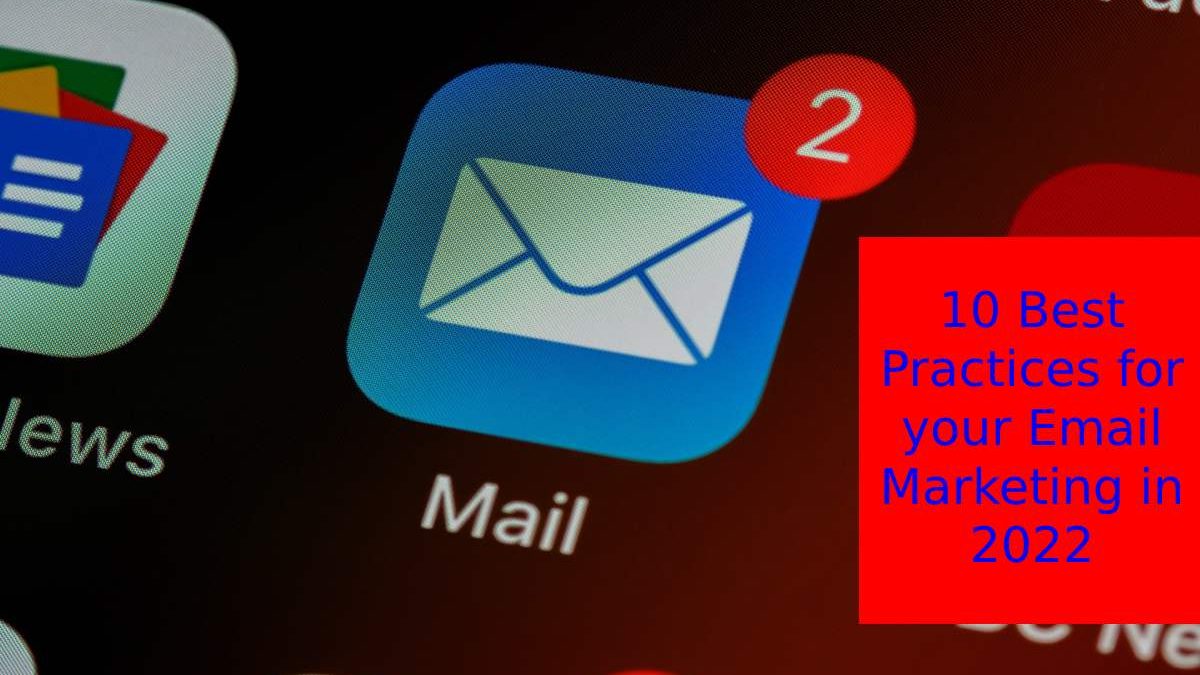Table of Contents
1. Systematize your Campaigns
Email Marketing – Marketing automation lets you send the right message to the right person at the right time without having to go through the power of setting up and sending all those emails one by one.
If you have not yet automated your email marketing strategy, the time has come to get down to work. To start, I recommend you create automated email campaigns for the following cases:
- Welcome email (when an operator registers for the first time).
- Confirmation of registration.
- Thank you message for the purchase or download.
- Birthdays and anniversaries.
- Abandoned carts.
- Recovery emails (when a user takes been inactive for several months).
2. Clean up your Metrics
You already know that what is not measured does not exist in marketing. To know if your emails are working, you will have to review the results of your campaigns periodically. Here are the key metrics you should be paying attention to:
- Open rate: the number of emails opened divided by the number delivered.
- Click-Through Rate – Number of unique clicks divided by the number of emails delivered.
- Delivery rate: the number of emails delivered divided by the number of emails sent.
- Abandonment rate: the total number of unsubscribe users divided by the number of emails sent.
3. Run A/B tests
Measuring the results of your email drive allows you to see what works and what doesn’t, but to take your 2022 email marketing to the next level, you have to get down to business and experiment by A/B testing.
A/B tests create two variants of the same email, but with a part that distinguishes them, for example, a different subject or a different colour in the call to action button. To do the test, we send each email to a sample of users from our database and compare the results to see which one is more effective.
4. Clean up your Mailing List
Poor quality mailing lists cause drop rates and open rates and can even cause you to classify as spam. So aim to start 2022 by removing inactive users from your database once and for all and repeat the process every six months at most.
5. Segment your Mailing List
Once your mailing list is clear of inactive users, the next step is to tidy it up with good segmentation.
Segmenting your mailing list is dividing it into smaller, more specific groups based on criteria like interests, location, buying behaviour, and more.
In this way, you resolve to send more relevant and personalized content to users, and consequently, you will be able to improve opening, click and conversion rates.
6. Include Calls to Action
Your emails should always include a call to action with very few exceptions. Think about the result you want to achieve with your email and make it clear to the user what you expect from him.
The call to action can be in the form of a button or a link that directs users to a specific site, for example, to read a blog post, register for an event, or make a purchase.
Remember that you can (and should!) be creative with your calls to action. Instead of opting for the classic “Buy Now” or “Click Here”, think about how you can give them a spin to multiply the clicks. And remember that A/B tests are your friends 😉
7. Use a Double Opt-in
The double opt-in consists of sending an email to new users who register in your database and asking them to click on it to confirm the subscription. This extra step helps you ensure that an email address is used and will improve your email marketing metrics.
8. Do not use an Email Address
Surely more than once, you have received emails from email addresses that start with ” no-reply “. But although it is a common technique, it can bring several problems:
- Reduces email deliverability.
- Increases the odds of being marked as spam.
- It worsens the customer experience since users cannot send you their questions.
Instead, I recommend using an email address like personname@yourcompany.com or customerservice@yourcompany.com. And, of course, make sure someone is watching her and responding to emails.
9. Personalize your Emails
Email marketing personalization helps you create better-targeted emails that stand out in the inbox. Personalization is not limited to putting the user’s name in the subject, but you should also use everything you know about them to adapt the text of the email and even the offer.
10. Check Emails before sending them
It is already known that haste is a bad adviser. So to prevent a silly mistake from ruining your email campaign, send yourself a test email and check that everything is in order:
- The email loads correctly.
- Images look good and have alternative texts.
- There are no spelling errors.
- Links and call-to-action buttons work.
- The email looks good both from the computer and from the mobile.
Also Read: Gantt Charts Software for Your Projects – Full Overview 2022


Review 10 Best Practices for your Email Marketing in 2022.